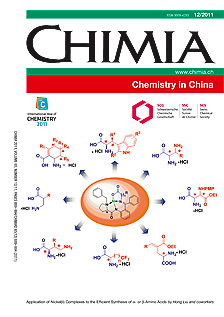Influence of the Hydrogen Reduction Time and Temperature on the Morphology Evolution and Hematite/Magnetite Conversion of Spindle-Type Hematite Nanoparticles
FH – HES
DOI:
https://doi.org/10.2533/chimia.2011.979Keywords:
Anisotropic nanoparticles, Hematite, Hybrid structure, Hydrogen reduction, Iron oxide nanoparticles, MagnetiteAbstract
We report on the transformation via hydrogen reduction of spindle-type hematite nanoparticles into hematite/magnetite hybrid iron oxide particles. The transformation process consists of the reduction of nanoparticles powder in an autoclave using hydrogen gas at a fixed pressure of 11 bars. Both temperature and time of reduction are varied between 300 °C to 360 °C and 0 to 45 h. X-Ray powder diffraction data on the obtained powder and corresponding Rietveld refinement allow the amount of reduced hematite to be determined as a function of these two parameters. Kinetics parameters are measured and an estimation of the activation energy is obtained through linearization of the Arrhenius equation. While reduction is dramatically accelerated at higher temperature, the morphology of the nanoparticles only remain qualitatively unchanged at 300 °C as seen from transmission electron microscopy images. The mechanisms underlying morphology changes are still under study and seem to be closely related to reactor pressure.Downloads
Published
2011-12-14
Issue
Section
Columns, Conference Reports
Categories
License
Copyright (c) 2011 Swiss Chemical Society

This work is licensed under a Creative Commons Attribution-NonCommercial 4.0 International License.
How to Cite
[1]
T. Chappuis, I. Bobowska, S. Hengsberger, E. Vanoli, H. Dietsch, Chimia 2011, 65, 979, DOI: 10.2533/chimia.2011.979.







